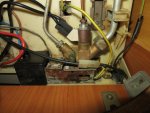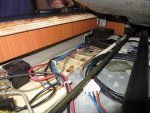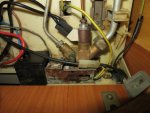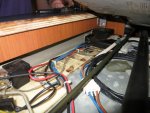LandRoutes
Guest
Thought the spare LPG tank was almost full - instead almost empty, in fact it didn't make it through the night with what gas that was left. So this morning I awoke to the Dometic igniter sparking away without a gas supply to quench it. But... once refilled with LPG and all other gas appliances restarted and with the gas flowing, the Dometic igniter did it's duty - pilot flame caught a blaze as prescribed (working flame lit) and stayed on and so did the igniter sparking cycle. In fact the fridge has caught up to working temp and is now 2 degrees with a healthy flame but the sparking of the igniter 'spark plug' continues. The only thing that stops the spark is pulling the fridge fuse - off goes the fridge light and the spark(er) and the flame keeps on blazing, fridge keeps on cooling! Gotta love these simple devices.
Except, I would like to get the igniter to stop sparking as it should when the flame is lit. Does anyone know what senses the igniter to stop sparking once the flame is started? Does the spark plug act as a sensor? I am pretty sure that the thermocouple doesn't get involved because I have had to resort to clipping the gas start knob in the start position to give the thermocouple time to heat up and keep the gas supply flowing but in these cases the spark still stopped immediately after the flame was heard woofing into ignition. (The thermocouple is another issue I have with the system but not the subject of this current problem)
Anyone who knows these 'simple' devices that knows what stops the sparking after ignition who can pass along any advice get's the gold star!
Thanks in advance!
Except, I would like to get the igniter to stop sparking as it should when the flame is lit. Does anyone know what senses the igniter to stop sparking once the flame is started? Does the spark plug act as a sensor? I am pretty sure that the thermocouple doesn't get involved because I have had to resort to clipping the gas start knob in the start position to give the thermocouple time to heat up and keep the gas supply flowing but in these cases the spark still stopped immediately after the flame was heard woofing into ignition. (The thermocouple is another issue I have with the system but not the subject of this current problem)
Anyone who knows these 'simple' devices that knows what stops the sparking after ignition who can pass along any advice get's the gold star!
Thanks in advance!




